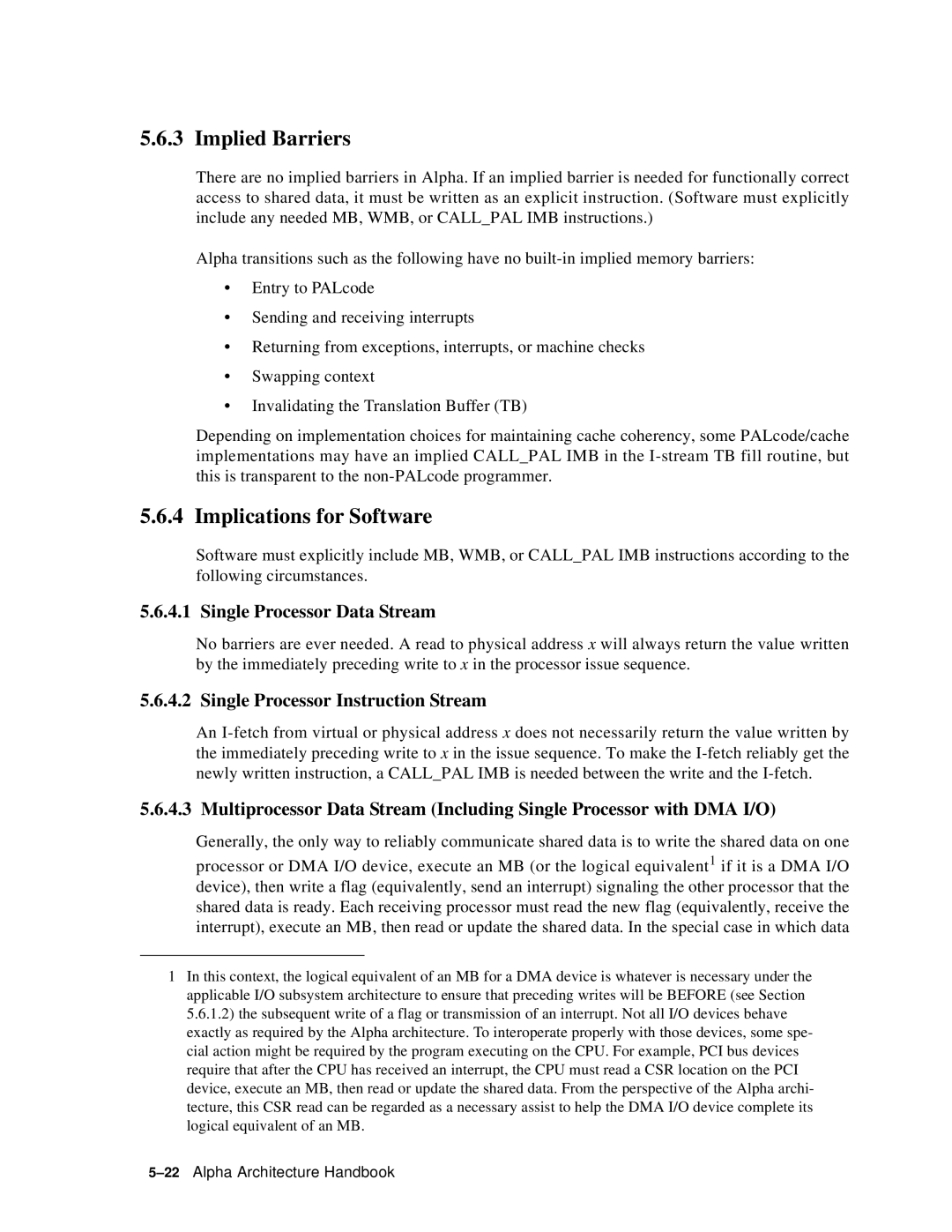5.6.3 Implied Barriers
There are no implied barriers in Alpha. If an implied barrier is needed for functionally correct access to shared data, it must be written as an explicit instruction. (Software must explicitly include any needed MB, WMB, or CALL_PAL IMB instructions.)
Alpha transitions such as the following have no
•Entry to PALcode
•Sending and receiving interrupts
•Returning from exceptions, interrupts, or machine checks
•Swapping context
•Invalidating the Translation Buffer (TB)
Depending on implementation choices for maintaining cache coherency, some PALcode/cache implementations may have an implied CALL_PAL IMB in the
5.6.4 Implications for Software
Software must explicitly include MB, WMB, or CALL_PAL IMB instructions according to the following circumstances.
5.6.4.1 Single Processor Data Stream
No barriers are ever needed. A read to physical address x will always return the value written by the immediately preceding write to x in the processor issue sequence.
5.6.4.2 Single Processor Instruction Stream
An
5.6.4.3 Multiprocessor Data Stream (Including Single Processor with DMA I/O)
Generally, the only way to reliably communicate shared data is to write the shared data on one processor or DMA I/O device, execute an MB (or the logical equivalent1 if it is a DMA I/O device), then write a flag (equivalently, send an interrupt) signaling the other processor that the shared data is ready. Each receiving processor must read the new flag (equivalently, receive the interrupt), execute an MB, then read or update the shared data. In the special case in which data
1In this context, the logical equivalent of an MB for a DMA device is whatever is necessary under the applicable I/O subsystem architecture to ensure that preceding writes will be BEFORE (see Section 5.6.1.2) the subsequent write of a flag or transmission of an interrupt. Not all I/O devices behave exactly as required by the Alpha architecture. To interoperate properly with those devices, some spe- cial action might be required by the program executing on the CPU. For example, PCI bus devices require that after the CPU has received an interrupt, the CPU must read a CSR location on the PCI device, execute an MB, then read or update the shared data. From the perspective of the Alpha archi- tecture, this CSR read can be regarded as a necessary assist to help the DMA I/O device complete its logical equivalent of an MB.
